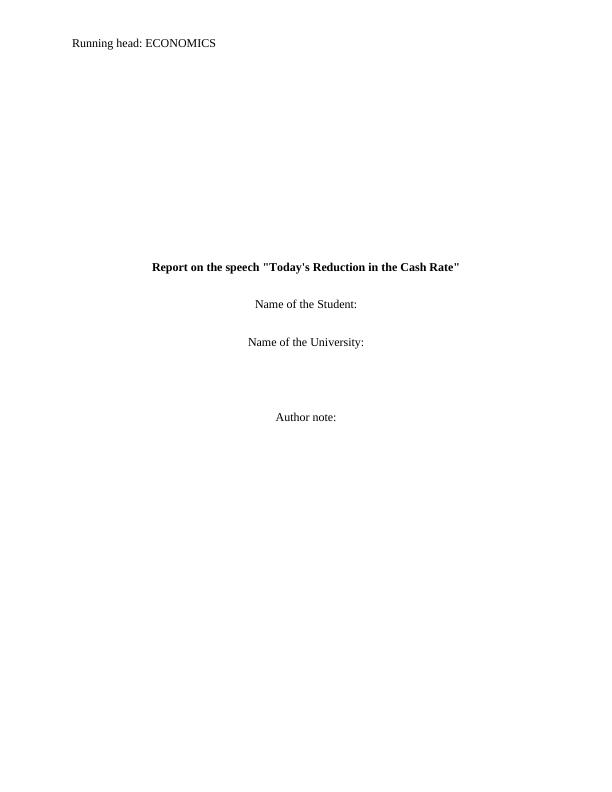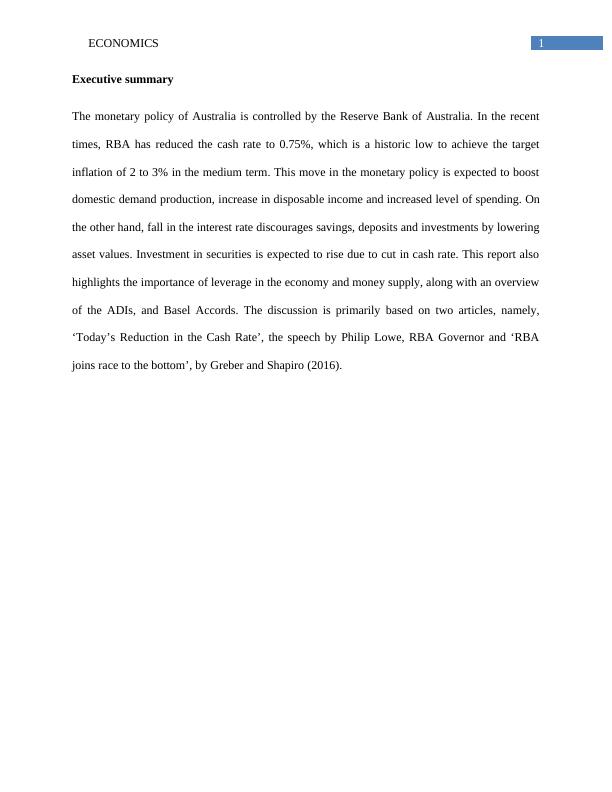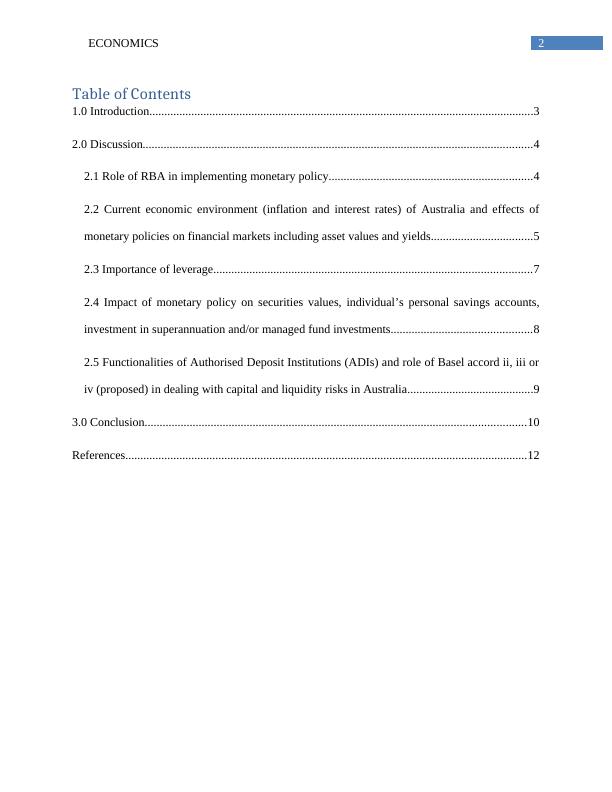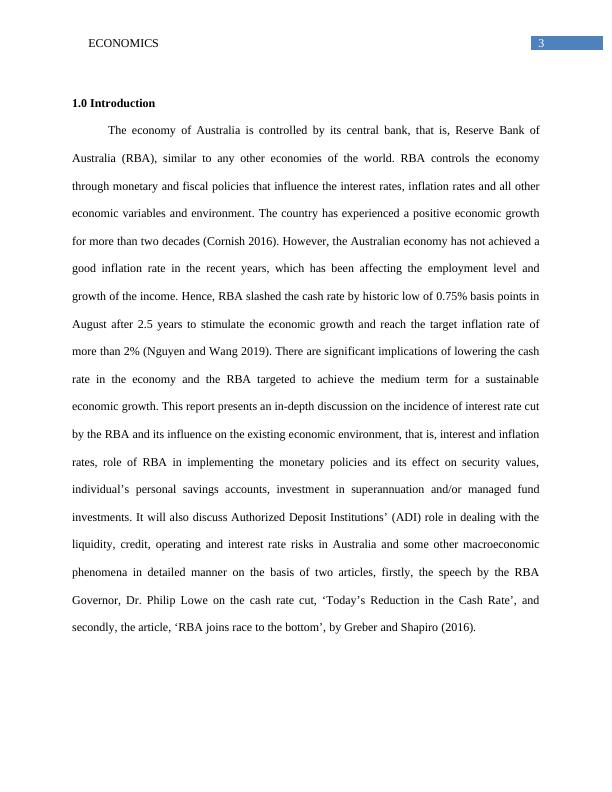Report on the speech "Today's Reduction in the Cash Rate" 2022
Write a report analyzing the speech 'Today's Reduction in the Cash Rate' by the Governor of the Reserve Bank of Australia, Dr Philip Lowe, discussing the role of monetary policy, interest rate reductions, and the impact on mortgage rates and savers.
15 Pages4062 Words17 Views
Added on 2022-09-30
Report on the speech "Today's Reduction in the Cash Rate" 2022
Write a report analyzing the speech 'Today's Reduction in the Cash Rate' by the Governor of the Reserve Bank of Australia, Dr Philip Lowe, discussing the role of monetary policy, interest rate reductions, and the impact on mortgage rates and savers.
Added on 2022-09-30
ShareRelated Documents
End of preview
Want to access all the pages? Upload your documents or become a member.
RBA and Monetary Policy: Role, Effects, and Risk Management
|9
|3252
|90
Assessment of Monetary Policy Implementation by Central Bank in Australia
|16
|3921
|108
Monetary Policy of Reserve Bank Australia
|7
|1339
|38
Deflation Threat in Australian Economy: Role of RBA and Monetary Policy
|14
|2987
|241
Role, Tools and Functions of Reserve Bank of Australia
|14
|2756
|176
Assignment on Macroeconomic Environment of Australia
|19
|3617
|26




